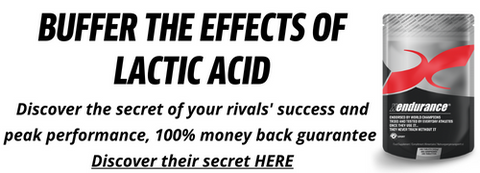Share
This article was originally written in the context of running, however every athlete can take benefits from pushing that pain barrier.
It’s a harsh reality, but no matter how fit you become, or how good a runner you are you can never outrun your pain barrier. Giving your all will never, and should never, be easy.
The world’s finest athletes don’t finish races feeling comfortable; if they did, it would indicate that they could have pushed harder, could have given more. If there’s one thing elite athletes know how to do, it’s to give everything they’ve got on the track. That means pain and discomfort in the short-term, but glory and, most importantly, a sense of self-satisfaction in the long-term.
The point is, whatever level you reach, you’ll always be trying to perform to the absolute best of your ability. If that ceases to be the case, you cease to be a competitive runner. Right now, you might think that you’d be happy breaking four hours in a marathon without leaving yourself unable to tackle stairs for a week, but as soon as you achieve that goal, your sights will move on to the next one. This relentless quest for improvement means that running as best you can will never feel easy, but it’s also what makes the sport so universal, so satisfying, and so gloriously addictive.
If you were relying on the notion that one day your improved fitness would make running a piece of cake, there is some good news. Although the testing sessions themselves will always hurt just as much, your improved fitness will offer some benefits:
You will recover faster
Whether between reps in an interval session or after a hard session or long run, the aches and pains that may take a few days to subside now will trouble you for a shorter and shorter period of time.
You will retain fitness more easily
If you are forced to take a break from training due to injury or illness, the fitter you are to begin with, the easier you’ll find it to come back.
You can cope with more
In better condition, your body is able to cope with more training volume and mileage before becoming tired and risking diminishing performance and/or injury.
The realisation that running your best is always going to hurt may be a demoralising one, but don’t let it be. If your sole aim is to avoid effort and discomfort, you will never get the most from your running, or from yourself. Coping with the hard work and the pain of a tough session or race comes from experience, knowing when to utilise certain mental strategies to help you cope and, above all, having a real desire to be the best you can be. If you have that, if you are hungry to do yourself justice, you will crack on, even when the going gets tough.
Finding the Balance
Despite all this talk of pushing yourself as hard as you can, you must always remember that not every run should feel like torture. An easy run in your training schedule is just as valuable as a killer threshold or hill session. Each type of run is there for a reason, and getting the balance right is the single most effective way of improving yourself as a runner.
A few tips and signs to watch for:
- Run too hard and far too often and the body won’t improve. It gets tired, injured or ill and you will inevitably plateau.
- Don’t allow an ‘It will get easier’ mentality – this leads to a softer mindset and fear of pain in training and racing.
- Take your morning resting heart rate each day before you get up. If it’s a few beats higher than normal, have an easier day, regardless of what your training schedule says. If it’s higher than that, take a rest day and just accept that your heart and body are tired.
Learn From The Best
Finally, go back and look at those elite athletes we’ve discussed. We’ve told you that they feel as much pain and discomfort in the final third of a race as you do, but look at how relaxed they appear. They run tall and light, maintain strong running technique and wear a relaxed expression. Learn from this and apply it to your own running, when you’re struggling. Letting your technique be compromised when you are forcing the effort is the worst thing you can do; it doesn’t work, it feels awful, it raises your heart rate even further and it uses lots of valuable energy inefficiently.
Focus on relaxing your shoulders, running light, falling forward slightly and looking well ahead of you, rather than down at your feet. Put your mindset in a positive place rather than focusing on how much this hurts; tell yourself how well you are running and how good you feel. Only allow that grimace to appear as you sprint for the finish line and give that final bit of effort. It wasn’t easy, was it? But it was worth it.










